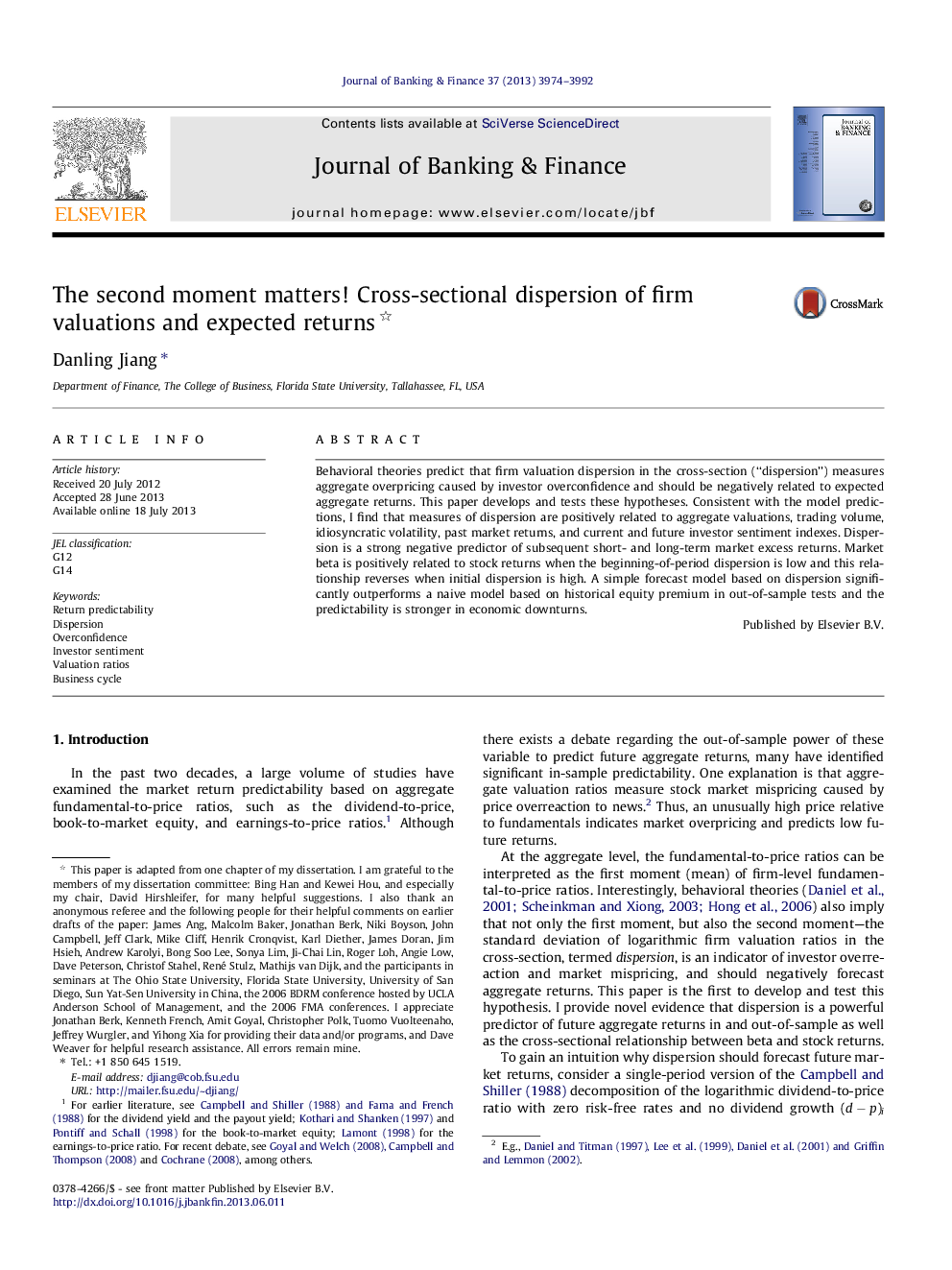| Article ID | Journal | Published Year | Pages | File Type |
|---|---|---|---|---|
| 5089223 | Journal of Banking & Finance | 2013 | 19 Pages |
Abstract
Behavioral theories predict that firm valuation dispersion in the cross-section (“dispersion”) measures aggregate overpricing caused by investor overconfidence and should be negatively related to expected aggregate returns. This paper develops and tests these hypotheses. Consistent with the model predictions, I find that measures of dispersion are positively related to aggregate valuations, trading volume, idiosyncratic volatility, past market returns, and current and future investor sentiment indexes. Dispersion is a strong negative predictor of subsequent short- and long-term market excess returns. Market beta is positively related to stock returns when the beginning-of-period dispersion is low and this relationship reverses when initial dispersion is high. A simple forecast model based on dispersion significantly outperforms a naive model based on historical equity premium in out-of-sample tests and the predictability is stronger in economic downturns.
Related Topics
Social Sciences and Humanities
Economics, Econometrics and Finance
Economics and Econometrics
Authors
Danling Jiang,
